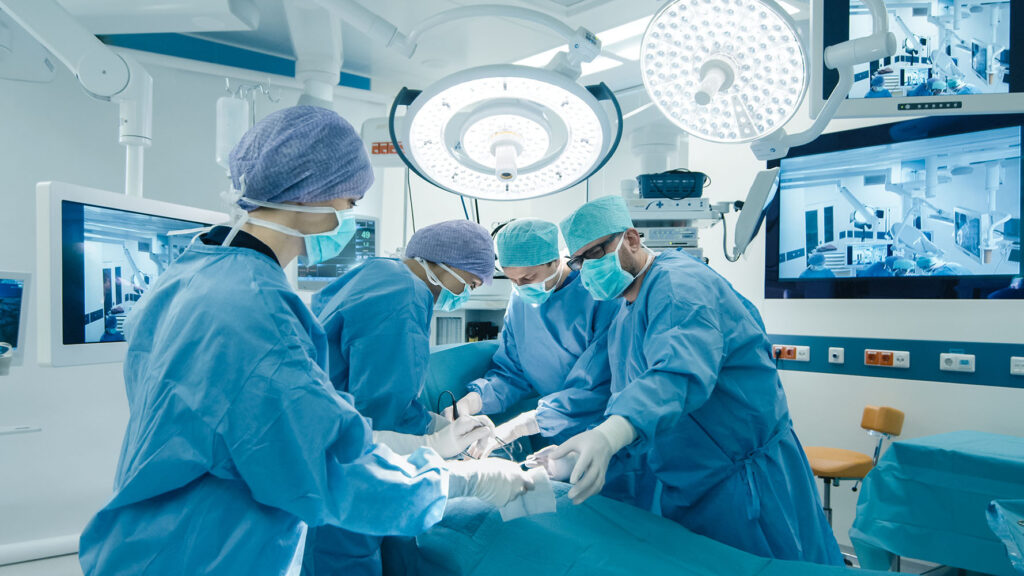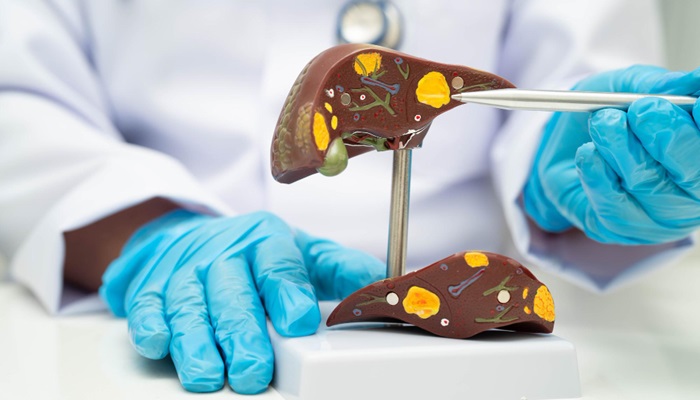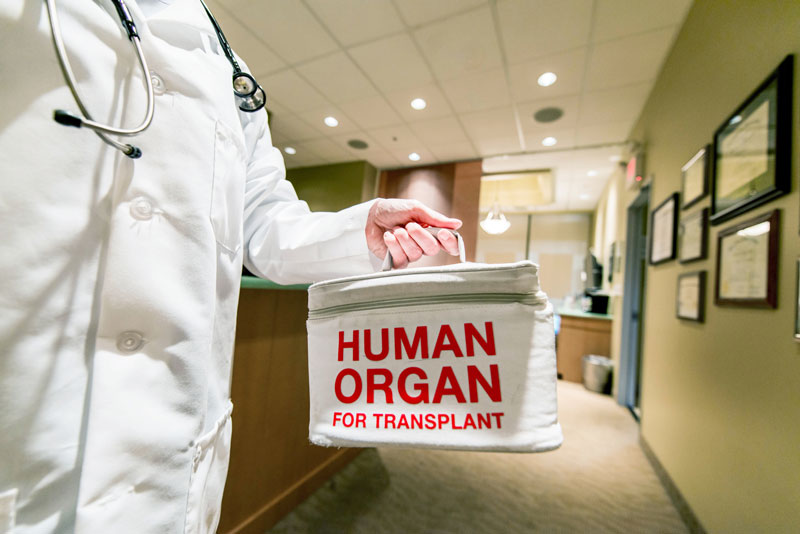The liver is one of the most vital and complex organs in the human body.
It acts as a chemical factory performing hundreds of functions essential for life, including detoxification, protein production, energy storage, and fat digestion.
When the liver fails to perform its functions due to chronic or acute diseases that do not respond to traditional treatments, the only option to save the patient’s life is liver transplantation.
This major surgical procedure is an amazing medical achievement, having transformed from an experimental procedure in the mid-20th century into a routine and effective treatment that saves thousands of lives annually worldwide.
However, it remains a complex operation requiring meticulous planning, a multidisciplinary medical team, and intensive care before and after surgery.
This operation is considered one of the most complex surgeries in modern medicine, as it combines technical precision, multidisciplinary expertise, and crucial decision-making.
Medical centers such as Liva Hospital in Turkey serve the patient and community with liver transplantation at highest quality standards.

When Does Liver Transplantation Become a Crucial Necessity?
Liver transplantation is considered a treatment option when liver damage reaches an advanced and irreversible stage, and when other treatments are no longer effective in preserving liver function or improving the patient’s quality of life.
This stage is usually known as chronic liver failure or late-stage cirrhosis, and it can also be the result of acute liver failure which occurs suddenly and rapidly.
The causes that can lead to liver failure and require transplantation are varied, and the main reasons include:
- Chronic Viral Hepatitis: Especially Hepatitis B and C. Over the years, chronic inflammation can lead to progressive liver damage, eventually resulting in cirrhosis and liver failure.
- Alcoholic Cirrhosis: Excessive and chronic alcohol consumption is a major cause of liver damage and cirrhosis.
- Non-alcoholic Steatohepatitis (NASH): An aggressive form of non-alcoholic fatty liver disease, which has become an increasing cause of cirrhosis, especially with rising rates of obesity and diabetes.
- Primary Biliary Cholangitis (PBC) and Primary Sclerosing Cholangitis (PSC): These are autoimmune diseases that affect the bile ducts inside the liver, leading to liver damage and cirrhosis.
- Autoimmune Hepatitis: Where the body’s immune system attacks its own liver cells.
- Hepatocellular Carcinoma (HCC): In some specific cases of liver cancer that originates in the liver itself, especially if the tumor is small and localized, liver transplantation can be an effective treatment option that removes both the tumor and the diseased liver.
- Genetic and Metabolic Diseases: Such as hemochromatosis, Wilson’s disease, and Alpha-1 antitrypsin deficiency, which lead to the accumulation of harmful substances in the liver and its damage over time.
- Acute Liver Failure: A rare and serious condition where there is a sudden and rapid deterioration of liver function in a person who did not suffer from chronic liver disease.
The cause may be drug toxicity (such as paracetamol overdose) or certain viral infections. In these cases, rapid and urgent liver transplantation is required to save the patient’s life.
Pre-Liver Transplant Evaluation Process
Before a patient becomes eligible for a liver transplant, they undergo a comprehensive and intensive evaluation process aimed at ensuring that transplantation is the most suitable option for them.
These evaluations are conducted in specialized organ transplant centers, which often include a multidisciplinary team.
Stages of Evaluation
- Comprehensive Medical Evaluation
- Detailed medical history: Including chronic diseases, previous surgeries, medications used, and history of liver disease.
- Thorough physical examination: To assess the patient’s general health, the presence of liver failure complications, and their nutritional status.
- Comprehensive laboratory tests: Including liver and kidney function tests, complete blood count, coagulation factors, viral tests (hepatitis, HIV), blood type, and tissue compatibility (HLA matching) if there is a living donor.
- Imaging tests: Such as ultrasound, CT scans, and MRI to evaluate the liver and other organs, and to detect any tumors or abnormalities.
- Heart and lung function evaluation: Electrocardiogram (ECG), echocardiogram, lung function tests, and in some cases, cardiac catheterization or sleep studies are performed to ensure the patient’s ability to tolerate anesthesia and surgery.
- Upper gastrointestinal endoscopy: To detect esophageal varices that may increase the risk of bleeding.
- Psychological and Social Evaluation
- This aspect is vital to ensure the patient and their family understand the complexities of the transplant process and post-surgical care, including lifelong adherence to immunosuppressive medications.
- Assessment of available social support for the patient (family and friends).
- Assessment of the patient’s psychological state and their readiness to cope with physical and psychological challenges.
- Nutritional Evaluation
- To assess the patient’s nutritional status and develop a plan to improve it before surgery if necessary, as malnutrition is common in chronic liver disease patients.
Listing the Patient for Transplantation:
After the evaluation is complete and the patient is deemed eligible for transplantation, they are placed on the liver waiting list.
Scoring systems are used to assess the urgency of the case and prioritize organ allocation.
The most common are the MELD (Model for End-Stage Liver Disease) system for adults, and the PELD (Pediatric End-Stage Liver Disease) system for children.
Higher scores are given to sicker patients, which means a higher priority for receiving a liver.
Steps of Liver Transplant Surgery
Liver transplant surgery is an extremely complex surgical procedure that requires a highly experienced surgical team.
It usually takes between 6 to 12 hours, and can extend longer in some cases. The operation is divided into several main stages.
Pre-Operative Preparation Stage
- The patient (if on the waiting list for a deceased donor) is called to the hospital immediately upon availability of the donor organ.
- Quick final tests are performed to ensure the patient is stable and ready for surgery.
- The patient is prepared for general anesthesia, and several intravenous lines and catheters are inserted to monitor vital signs and administer fluids and medications.
Removal of the Diseased Liver (Hepatectomy)
- A large surgical incision is made in the abdomen, usually in the shape of an inverted “Y” or what is known as a “Mercedes” incision, to allow wide access to the liver.
- Surgeons meticulously separate the diseased liver from all surrounding blood vessels and bile ducts.
This stage is extremely critical due to the liver’s vascular complexity and its proximity to major veins and arteries (such as the inferior vena cava, hepatic artery, and portal vein). - The inferior vena cava, hepatic artery, portal vein, and bile ducts are cut, and then the diseased liver is completely removed.
This step is highly delicate and requires high surgical expertise to control bleeding.
Preparation of the Donor Liver
- Simultaneously, the donor liver (whether from a deceased or living donor) is prepared by another team.
The liver is flushed with a special solution and cooled to preserve its viability during transport. - The liver is carefully inspected to ensure its integrity and absence of any issues.
Liver Implantation and Reconnection (Anastomosis)
- The new liver is placed in the recipient’s abdominal cavity.
- The most precise stage of the operation begins: re-connecting the blood vessels and bile ducts to ensure proper blood flow and restoration of liver function. This is done in a precise order:
- Inferior Vena Cava (IVC) connection: The new liver’s inferior vena cava is connected to the recipient’s IVC.
- Portal Vein connection: This connection is crucial as it provides about 75% of the blood flow to the liver.
- Hepatic Artery connection: This artery provides oxygenated blood to the liver and is essential for its viability. This connection is extremely precise due to the small size of the artery.
- Bile Duct connection: The bile duct from the new liver is re-connected to the recipient’s bile duct, or in some cases, it is connected directly to the small intestine (Roux-en-Y limb) for bile drainage.
Closure Stage
After ensuring stable blood flow in the new liver and its proper functioning (the liver’s color often changes to pink and bile production is observed), the surgical incisions are carefully closed.
This operation is a testament to the complexity and ingenuity of modern surgery, where every step requires extreme precision to prevent complications and ensure the success of the transplant.
Long-Term Challenges After Liver Transplantation
- Organ Rejection: Organ rejection is the biggest challenge. Despite immunosuppressive medications, the immune system can attack the new liver. Rejection can be acute (occurring in the first weeks or months) or chronic (occurring after years). Acute rejection requires increased doses of immunosuppressive medications or a change in medication.
- Infections: Immunosuppressive medications weaken the patient’s immune system, increasing the risk of infections (viral, bacterial, fungal). Patients must exercise extreme caution and take preventive measures.
- Biliary and Vascular Complications: Problems may occur in the bile ducts (such as strictures or leaks) or in the blood vessels (such as hepatic artery thrombosis), and may require additional interventions.
- Side Effects of Immunosuppressive Medications: These medications can cause numerous side effects such as kidney problems, high blood pressure, diabetes, osteoporosis, high cholesterol, and increased risk of certain types of cancer. Close monitoring and dose adjustment are required.
- Recurrence of the Original Disease: In some cases, the original disease that led to liver failure (such as viral hepatitis or certain types of cancer) can recur in the new liver.
- Quality of Life: Despite the challenges, most patients achieve a significant improvement in their quality of life after transplantation and can return to daily activities, work, and even moderate exercise.

Conclusion
Liver transplantation is one of the most prominent achievements in the history of modern medicine, offering a second chance at life for patients suffering from intractable liver failure.
It is a complex and multifaceted procedure, requiring extreme precision in diagnosis, unparalleled surgical skill, and intensive, lifelong post-surgical care.
From the comprehensive patient evaluation and placement on the waiting list, to the complex surgery involving the removal of the diseased liver and transplantation of a new one, every step in this journey carries challenges and hopes.
Adherence to medical instructions and following a healthy lifestyle are cornerstones for the success of this operation and improving the patient’s quality of life.
In world-class medical centers like Liva Hospital in Turkey, comprehensive and specialized care is provided, ensuring the highest chances of success for these patients, confirming that the hope for complete recovery and living a normal life is not just a dream, but a reality for many.
Frequently Asked Questions
Can I live a normal life after a liver transplant?
Yes, most patients can live a very normal and fulfilling life after a liver transplant. With adherence to immunosuppressive medications and regular follow-up, many patients can return to work, pursue hobbies, and enjoy an active life.
How long does full recovery take after a liver transplant?
Recovery time varies from patient to patient, but generally, it can take 6 months to a full year or more for complete recovery and restoration of strength and endurance.
Do I need to take immunosuppressive medications for life?
Yes, generally, liver transplant patients must take immunosuppressive medications for life to prevent the body’s immune system from rejecting the transplanted liver. Doctors will adjust dosages over time, but stopping them can lead to organ rejection.
What are the most prominent complications that can occur after a liver transplant?
The most prominent complications include organ rejection, infection (due to a weakened immune system from immunosuppressive medications), and problems with the bile ducts or blood vessels connected to the new liver, in addition to the long-term side effects of immunosuppressive medications.
Can the original disease return in the new liver?
In some cases, yes. For example, Hepatitis C or certain types of cancer may recur in the new liver. However, measures are taken to reduce this risk, and preventive treatments may be given after transplantation.
Can a pregnant woman undergo a liver transplant?
Liver transplants are rarely performed during pregnancy except in extreme emergencies. However, women who have undergone a liver transplant can become pregnant and give birth to healthy babies, but this must be done with prior planning and close monitoring.


